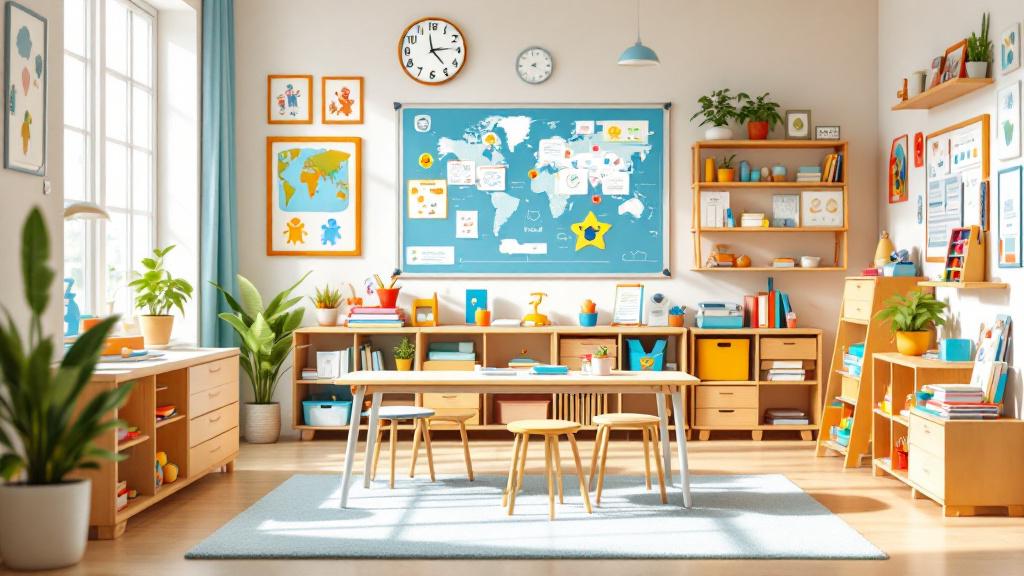Understanding and Addressing Fine Motor Delays in Children
Fine motor delays impact a child's ability to participate in everyday activities such as writing, self-care, and manipulating small objects. Recognizing the signs early and implementing targeted occupational therapy strategies can significantly improve a child’s independence, confidence, and developmental progress.
Fundamentals of Fine Motor Skills and Developmental Milestones

What are common signs and developmental milestones for fine motor delays?
Signs of fine motor delays can be observed through several behaviors and developmental benchmarks. Children struggling with grasping, manipulating, or releasing small objects like coins, beads, or toys may show early signs of motor challenges.
Poor handwriting or messy drawing can indicate difficulties with hand-eye coordination and finger control. Tasks such as buttoning clothes, using scissors, or tying shoelaces often pose challenges for children with fine motor delays.
Developmental milestones also serve as important indicators. For example, a typical infant should sit independently by around 6 to 8 months, crawl by 9 to 12 months, and stand or walk before 18 months. Children who do not achieve these milestones on time may have underlying fine motor or gross motor concerns.
Further signs include trouble with pincer grasp (picking up small objects with thumb and forefinger), difficulty with object transfer from hand to hand, or problems with hand coordination during play activities like building blocks or drawing.
These delays might stem from neurological, muscular, or developmental issues that affect muscle tone, nerve control, or visual-motor integration. Recognizing these signs early encourages timely intervention.
Occupational therapy can significantly improve fine motor skills through tailored exercises, sensory activities, and developmental strategies. Early evaluation and intervention are crucial in supporting children to develop independence in daily and academic tasks, boosting their confidence and overall growth.
Key Components and Indicators of Fine Motor Development and Challenges

What are the critical aspects of fine motor development?
Fine motor development involves various components that enable children to perform precise movements with their smaller muscles, especially in the hands and fingers. These components include bilateral coordination, grip strength, hand arch development, finger isolation, and opposition.
Bilateral coordination refers to the ability to use both hands together smoothly, which is essential for activities like cutting, tying shoelaces, and building with blocks. Grip strength is vital for holding writing tools, utensils, and small objects securely. Proper hand arch development ensures the hand can hold and manipulate objects with precision.
Finger isolation, or finger independence, allows specific fingers to move separately, enabling tasks like pinching or grasping small items. Opposition, the movement of the thumb touching the fingertips, is crucial for grasping and manipulating tiny objects.
How do signs of delays manifest and impact daily activities?
Signs of fine motor delays can include difficulty grasping or controlling tools, messy handwriting, slow or uncoordinated movements, and avoidance of fine motor activities.
Such challenges can significantly affect a child's daily life. For example, poor grip strength may hinder efficient self-care tasks like buttoning or feeding. Lack of finger isolation can impair skills needed for writing, drawing, or manipulating small objects, impacting school performance.
Delays in these areas can lead to frustration, decreased self-esteem, and decreased participation in activities like arts and crafts, which are essential for social and cognitive development.
How do these components influence independence?
Developing strong bilateral coordination, grip, arching of the hand, and finger independence is fundamental for a child's independence in dressing, feeding, writing, and self-care. Early identification and intervention can help address delays, improve functional abilities, and promote confidence in everyday tasks.
Activities and Interventions to Foster Fine Motor Skills

What intervention strategies are used to improve fine motor skills?
Occupational therapists employ a variety of playful and engaging strategies to enhance fine motor abilities in children. These include activities such as manipulating playdough, threading beads onto strings, and using small manipulative toys to refine finger dexterity. Cutting with scissors and practicing in-hand manipulation through activities like stacking blocks or rotating objects help develop grip strength and coordination.
To support motor planning and finger control, therapists often incorporate sensory integration activities like playing with textured materials or using visual-motor tasks such as copying shapes, drawing lines, or tracing letters. Adaptive tools, including pegboards, pinching tools, and sensory writing trays, are used to encourage precision and finger independence.
These comprehensive approaches are designed to make therapy both vigorous and enjoyable. They aim to build hand strength, improve coordination, and foster confidence in children, helping them perform daily tasks with independence and ease.
What activities can support fine motor development in children?
Various activities can significantly boost fine motor skills by strengthening hand muscles and improving coordination. Creative exercises like sculpting with Playfoam or Playdough stimulate finger and hand strength.
Outdoor activities such as worm excavation or picking up small objects with tweezers facilitate pinch strength and precision. Sorting small items or matching objects using tweezers or tongs not only makes the activity fun but also enhances dexterity.
Arts and crafts offer valuable opportunities for fine motor practice. Cutting and pasting, using stickers, threading beads, or stringing shapes onto cords develop pincer grasp and hand-eye coordination.
Everyday chores like buttoning shirts, zipping zippers, or using mini clothes pegs during laundry tasks contribute to functional skill development. Incorporating these activities into daily routines at home or in school settings can support consistent progress in fine motor abilities.
Additional Support Techniques
- Using manipulatives like magnetic letters, lacing cards, or puzzles.
- Engaging in outdoor crafts such as drawing with sidewalk chalk.
- Incorporating sensory activities like finger painting or textured sheets.
- Utilizing adaptive tools and modifications to encourage successful task completion.
By blending therapeutic activities with routine tasks, children can develop the fine motor skills necessary for academic success, self-care, and overall independence.
Role of Occupational Therapy in Supporting Fine Motor Development

How can occupational therapy help children with developmental fine motor challenges?
Occupational therapy plays a vital role in helping children who experience delays or difficulties with fine motor skills. Therapists begin with comprehensive assessments, which include standardized tests and clinical observations, to pinpoint specific issues such as poor hand-eye coordination, weak grasp, or limited bilateral hand use. Using this information, they craft personalized, engaging intervention plans tailored to each child's needs.
These plans often involve play-based activities that improve grasp patterns, enhance in-hand manipulation, and promote bilateral coordination. For instance, children might practice threading beads, using scissors, or playing with putty to strengthen finger muscles and improve dexterity. Sensory integration techniques are employed to help children process tactile stimuli, which supports better motor planning and control.
Adaptive tools like pencil grips, slant boards, and specialized scissors can be incorporated into daily routines. These modifications make tasks easier and more enjoyable, fostering independence in self-care, handwriting, and other daily activities.
Additionally, collaboration with families and educators ensures that strategies learned during therapy are reinforced at home and in the classroom. Regular progress monitoring through observations, work samples, and feedback helps therapists tweak therapy plans, ensuring steady development. This holistic approach not only boosts a child's fine motor skills but also builds confidence, enabling children to participate more fully in school and daily life.
What are effective occupational therapy techniques to improve fine motor skills in children?
Effective therapy techniques are diverse and fun, targeting different aspects of fine motor development. Play activities such as using play dough, lacing cards, and beading are fundamental—they enhance hand-eye coordination, finger dexterity, and bilateral integration.
Sensory integration methods are also crucial. These include tactile activities like finger painting or textured material manipulation, which help children better interpret sensory inputs vital for motor planning. Hand strengthening exercises, such as squeezing therapy putty or pulling small objects, improve grip strength and control.
Visual-motor activities like copying shapes, completing puzzles, or stacking blocks foster precision and coordination. Adaptive strategies involve the use of tools such as pencil grips and weighted utensils, which promote proper grasp and endurance.
When families participate actively, practicing these activities at home, therapy efficacy increases. Overall, combining playful activities, sensory processing supports, strength exercises, and adaptive tools creates a comprehensive approach to developing proficient fine motor skills in children, laying a foundation for success in school and everyday tasks.
Monitoring Progress and Enhancing Confidence through Play
How does occupational therapy assist children with fine motor challenges?
Occupational therapy plays a vital role in helping children overcome difficulties with fine motor skills. Therapists carefully assess each child's specific needs using standardized tests, clinical observations, and work samples. They then develop tailored activities that target muscle strengthening, hand-eye coordination, and motor planning.
Play-based interventions are central to these programs. Children might participate in activities like threading beads, squeezing therapy putty, or using tongs to pick up small objects. These fun exercises support skill acquisition while keeping children motivated.
In addition to activities, therapists incorporate sensory strategies and modify environments to support sensory processing. Tasks are broken down into manageable steps, creating a sense of success and independence.
Progress is consistently monitored through observations, work samples, and feedback from children, parents, and teachers. Regular tracking allows therapists to adjust activities, ensuring continual growth.
Celebrating small successes and milestones is essential in building confidence. When children see their achievements, they become more eager to develop their fine motor skills and persist through challenges.
What activities can support fine motor development in children?
A variety of engaging activities can significantly enhance fine motor skills. Artistic tasks like finger painting and drawing encourage precision and control.
Manipulative play, such as building with LEGO, squeezing into sensory bins, or using tweezers and clips, improves finger strength and coordination. Tasks like buttoning, zipping, or cutting with safety scissors help develop real-life skills fostering independence.
Outdoor activities also contribute to development. Sidewalk chalk drawing, digging in the dirt, or playing with sticks and rocks enhance shoulder stability and fine motor control.
Integrating these activities into daily routines creates a fun, supportive environment for children to reach developmental milestones. Achieving these goals boosts confidence, self-esteem, and motivation to continue improving their skills.
Empowering Children Through Targeted Therapy and Practice
Early diagnosis, tailored intervention plans, and consistent practice are key to overcoming fine motor delays. Occupational therapy provides children with engaging, goal-oriented activities that strengthen muscles, enhance coordination, and promote independence. Supporting children’s development in everyday routines ensures lasting progress, confidence, and success in their academic and social lives.
References
- The OT's Guide to Fine Motor Skills - The OT Toolbox
- Top Fine Motor Occupational Therapy Strategies for Kids - Coral Care
- 35 Fine Motor Activities: Therapists' Ultimate List - NAPA Center
- The Role of OT in Developing Fine Motor Skills - Sasco River Center
- Occupational Therapy Techniques for Improving Fine Motor Skills in ...
- OT to the Rescue! Educational Play for Fine Motor Skill Development
- Effectiveness of Occupational Therapy Interventions for Fine Motor ...











